So, it makes sense to get as much information about the Red Planet as possible before the first humans land there.
Yet even after sending dozens of spacecraft, astronomers and scientists are still left with many unanswered questions about Mars.
Questions About Mars
Here I have listed 7 of those fascinating questions along with what we know so far. Let's begin:
1. What's Up with The Two Faces of Mars?
The north and south hemisphere of Mars are vastly different from each other. In fact: The two hemispheres of Mars are more different from any other planet in our solar system!
This is how it is:
The northern hemisphere of the planet is low, flat and smooth. The running theory is that this smoothness was created by water that once flowed across the Martian surface.
Mars' southern hemisphere, on the other hand (or half of the planet), is made up of mountainous highlands, rough terrain and is heavily cratered.
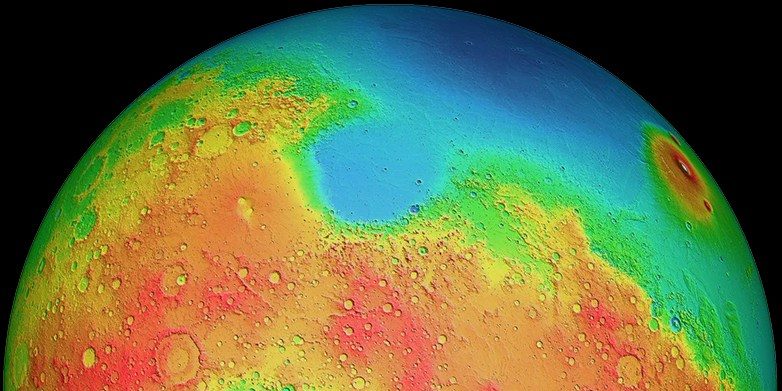
So, what is the reason for this disparity between the two faces of Mars (i.e. its north and south poles)?
Well, scientists ran a simulation and came to the conclusion that sometime during the early days of Mars, it collided with a large celestial object. This object is estimated to be of the size of Earth's Moon.
The impact with such a large object released so much energy that it created an ocean of magma on the southern hemisphere. This magma and molten rock then solidified over time to create the vast mountainous range.
2. The Atmospheric Mysteries on Mars:
The European Space Agency's Mars Express Spacecraft discovered Methane in the Martian atmosphere back in 2003.
Now methane is one of the simplest organic molecule found on Earth. And of all the methane found in Earth's atmosphere, about 90 - 95 percent came from biological means. Most of it comes from grass-eating animals such as cows, goats etc.
Comment: Or a more likely origin of methane: Thousands of underground methane bubbles set to explode in Siberia
So how did it get into the Martian atmosphere? There are ways to produce methane without life, such as volcanic or other geological activity.
The lifetime of methane on Mars is long enough for winds and other diffusions to spread the gas into the atmosphere almost evenly. This has caused confusion in the detected variations of methane levels over the planet.
One possible explanation may be that the gas comes from and/or disappears into local sinks. One possible sink is the soil. If the soil is chemically reactive, then it could increase the loss of methane. Now if there are many such additional sinks on Mars, then it would take an even larger source to sustain the observed quantity of methane.
Scientists also suspect this methane to be stable in the Martian atmosphere for about 250 - 300 years - which means that this gas was generated recently...
Say what! :O
The Martian Mystery Continues...
And that's not it, the airborne telescope SOFIA (Stratospheric Observatory for Infrared Astronomy) has measured atomic oxygen on Mars' atmosphere. This is the first such measurement in four decades.
The oxygen (O2) found on Earth (you know, the stuff we breathe) is made up of two atoms of oxygen. Atomic oxygen, on the other hand, is made up of just one atom. A classic property of atomic oxygen is that it reacts easily with other substances, and therefore doesn't stay around for very long on Earth's surface.
The theory goes that a few billion years ago, Mars strangely lost its magnetic field. This allowed huge bursts of solar energy from the Sun to strip it of its atmosphere.
All that excess ultraviolet radiation is constantly breaking apart O2 to create atomic oxygen. So, in essence, there may have been oxygen on mars at some point in the past as well.
Up next on our list of questions about Mars:
3. Does Water STILL Flow on Mars?
OK so based on the evidence we can state that water may have once run on the surface of Mars, but we don't know if it still flows on the surface today.
The Positive First Experiments
In 2015 the Mars Reconnaissance Orbiter (MRO) from NASA conducted some experiments on the Martian surface and the results were shocking.
The findings: Liquid water still flows intermittently on present-day Mars!
Signs of hydrated minerals on slopes were detected by the MRO on areas with the mysterious streak. The MRO used an imaging spectrometer to determine that the dark reddish streaks appear to move over time. Which was similar to the ebb and flow nature of water here on Earth.
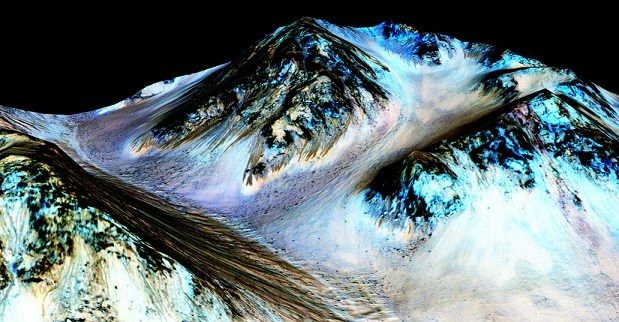
These conclusions from Mars Reconnaissance Orbiter provided a very strong indication that liquid saltwater flows on Mars.
But that was 2015...
According to new research from the US Geological Survey published in November 2017, the previously considered water flow on Mars could just be granular flows.
The report states that the cause of the dark red streaks were grains of sand and dust that just slipped downhill to make these seasonal dark streak patterns, instead of regular underground water coming to the surface and darkening the surface.
Furthermore, the Mars Reconnaissance Orbiter also showed that the way the dry sand is descending on the slops is very similar to the nature of sand running down on dunes on Earth.
These dark streaks on the Martian surface number in the thousands, and are collectively called "Recurring Slope Lineae" or RSL. They have been found in more than 50 areas which have rocky-slope like feature, and are mostly found in areas near to the equator until the halfway to the poles.
According to Colin Dundas of the U.S. Geological Survey's Astrogeology Science Center:
"We've thought of RSL as possible liquid water flows, but the slopes are more like what we expect for dry sand. This new understanding of RSL supports other evidence that shows that Mars today is very dry."Bummer.. 🙁
See Also: Nasa Just Found A Completely Unexpected Mineral On Mars
4. Did Mars Have Oceans?
When it comes to the questions of oceans being on the surface of the Red Planet, there have been numerous missions that have produced a great deal of evidence. These pieces of evidence suggest that Mars was once warm enough for liquid water to run across its surface.
The hypothesis for Oceans in Mars states that early in the history of the planet, about one-third of its surface was covered by an ocean of liquid water.
This primordial ocean, known as the Oceanus Borealis was big enough to fill the basin Vastitas Borealis in the northern hemisphere at a time period of approximately 4.1-3.8 billion years ago.
The Vastitas Borealis basin is a region which lies 4-5 km (2.5-3 miles) below the mean planetary elevation.
These research for oceans on Mars takes into account many of the geographic features observed on the Martian surface. These features include what appear to be ancient shorelines, enormous oceans, network of valleys and river deltas. Evidence also points to minerals in the Martian soil and atmosphere that are required in the formation of water.
How much water is on Mars compared to Earth?
A team of researchers has estimated that there were about 686 quadrillion meters cubed of water on Mars.
That is huge! That is 1 followed by 15 zeros huge!!
If that doesn't seem huge, it's around twice the volume of the Atlantic Ocean or half the total volume of all the Earth's oceans.
But what is really intriguing are the current models of the climate of Mars in its early days. These climate models cannot explain how such warm temperatures could have existed since our Sun was much weaker back then. And early Mars would have required a warmer climate and a denser atmosphere to allow liquid water to remain at the surface.
This brings us to the question of how these features were formed. One possible explanation is that these features might have been created by winds or other mechanisms.
Still, there is some evidence that poses the probability that Mars was once warm enough to support liquid water on its surface. Maybe even enough to have supported life.
Wait...
5. Is There Life on Mars?
One of the most commonly asked questions is that:
Is there life on Mars? Or has there ever been?
NASA's Viking 1 space mission was the first and so far only attempt to search for evidence of life on Mars. And since it landed, the question has become even more difficult to answer.
When Viking orbiters such as Mariner 4 first did a flyby of Mars, they took close-up images of the surface of the planet. These images showed Mars as a barren dry planet. However, there some features that indicated that it may not have been always like this.
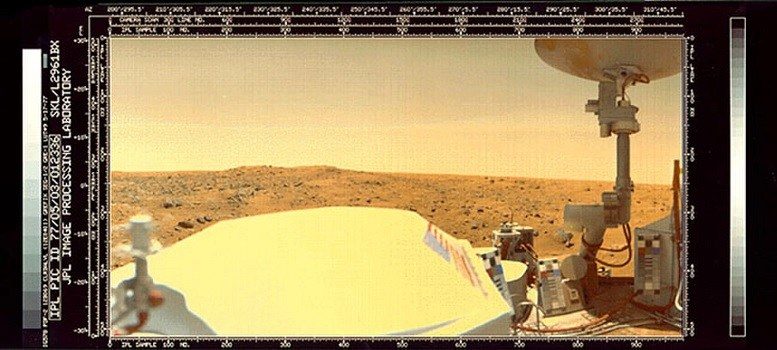
One of the main detection made by the Viking mission was of the chemicals dichloromethane and methyl chloride. The results of the experiments were deemed inconclusive, and the chemical compounds were said to be from Earth. I.e. cleaning fluids used to prepare the spacecraft.
Water Is Life
Without argue it can be stated that water is the key component of life in the universe. All forms of life on Earth require water. And even though there is a possibility that life can evolve without the presence of water, it is easier to search for conditions that are already known to us human, rather than guessing what could be.
Now that is an issue with Mars of today. The surface of the Red Planet in its current form is very hostile to life. There is the extreme temperature in terms of cold, solar radiation because of no magnetic field on the planet, hyper-aridity and other factors.
Even so, there are various examples of life evolving and surviving in extreme environments on Earth. The Antarctic Dry Valleys has one of the coldest, driest soils and yet the area is populated with living creatures. Same is the case with the hyper-arid Atacama Desert in Chile.
On Earth, there is life virtually everywhere there is liquid water. So considering that there may have been ocean on Mars, one can hope that at least at some point in the past, there may have been life on Mars.
And if that turns out to be true, the next questions about life on Mars would be: Is it still there? How do we find it?
Answering these questions will help us understand how common life may or may not be in the rest of the universe.
6. Is Earth's Life from Mars?
This is also one of the frequently asked questions.
It is often debated that the life on Earth came from Mars, by way of meteorites.
Throughout its history, Earth has received meteorites from various sources in the cosmos. In the past, meteorites that were blasted off from Mars due to cosmic impact crashed on Earth. Some of these meteorites were discovered in Antarctica.
Studies conducted on these Martian fragments revealed structures that highly resemble the ones made by terrestrial microbes on Earth.
Further research on the specimens points towards the conclusion that these structures are chemical based and not biological.
These findings have raised the provoking possibility that life on Earth actually originated on Mars long ago, carried here on meteorites. But still, the debate continues.
Theories are that on Mars, the conditions were just not good for life to evolve. However, on Earth, the conditions were just suitable enough for the biological microbes from the meteorites to develop into complex living organisms.
What are your thoughts about this?
And now to our final unanswered question about Mars:
7. Can Humans Live on Mars?
It seems like Mars is on everyone's mind these days. NASA is planning to send first humans to the red planet by 2030. Elon Musk's SpaceX wants to get there even sooner. It is aiming to have people on Mars by 2024! And with the very recent success of Falcon Heavy (the reusable super heavy-lift launch vehicle), this idea doesn't seem so far off.
You can check out the amazing launch and successful landing of the Falcon Heavy Rocket below. Video credit to SpaceX.
But there is still a lot of variables that we need to understand and get a complete grip on before we are ready to make this planetary journey. Hollywood movies like The Martian and Mission to Mars and sci-fi series like The Expanse explore what we might find once we finally reach the Red Planet, but still, most of them aren't addressing the biggest questions. Here's some of them:
Habitation Plans on Mars:
Martian atmosphere is mostly carbon dioxide (think 95%). The average temperature is about negative 60 degrees Celsius, making the planet too cold to sustain human life. Gravity is another key issue, as it is only about 38% that of Earth. And finally, the atmosphere on Mars is about 100 times thinner than Earth's atmosphere at sea level.
NASA is collaborating with other companies in designing possible habitat prototypes. These designs will likely have a few things in common, namely, they will have to be self-sustaining, protected against the thin Martian atmosphere, and capable of supporting life for extended periods without any help or support from Earth.
The International Space Station (ISS) gives a very good idea of what to expect. According to Richard (Rick) McGuire Davis, Jr., Assistant Director for Science and Exploration and co-leader of the Mars Human Landing Sites Study at NASA:
"The International Space Station has really taught us a tremendous amount of what is needed in a deep space habitat. We'll need things like environmental control and life support systems (ECLSS), power systems, docking ports, air locks so that crew can perform space walks to repair things that break or to add new capabilities."Growing Food and Supplies:
The Interplanetary human voyages between Earth and Mars would also have to deal with the challenge of surviving on limited supplies. Issues of food, water, oxygen and proper medical supplies for any potential hazards like radiation and fire will have to be dealt with.
Growing and creating the necessary supplies such as food, water, oxygen and stocking medicine supplies on Mars is the only way of settling in a self-sustaining habitat. For food growth, the thin atmosphere and reduced sunlight possess a challenge, as it will be difficult to grow anything. One possible solution being developed now is the silicon rubber based artificial leaves.
These leaves, which are designed to work in harsh conditions, can harness a small amount of sunlight and convert it into enough usable power which could be utilized in the creation of medicine and other compounds.
Conclusion:
We have watched Apollo missions go to the Moon and back, we have seen numerous space shuttles take-off and the creation of the International Space Station, we are now seeing the reusable Falcon Heavy rockets take to the skies in an attempt to break that next barrier in long-distance space flights.
These questions about mars are just the beginning. We have a long way to go to understand the true wonders of our universe and in becoming an interplanetary civilization. And yet whenever we see that rocket soar to the sky, we know that we have overcome one more hurdle that we ourselves thought was impossible.
That is a great source of inspirations and it gives us hope, that if not we in our lifetimes, then our young one and the generations to come will be among those which will step foot on the Martian soil.
In the immortal words of Neil Armstrong:
"That's one small step for a man, one giant leap for mankind."Since everyone loves infographic, I have created one which summarizes the 7 questions about Mars and what we know till now about them. Check it out:
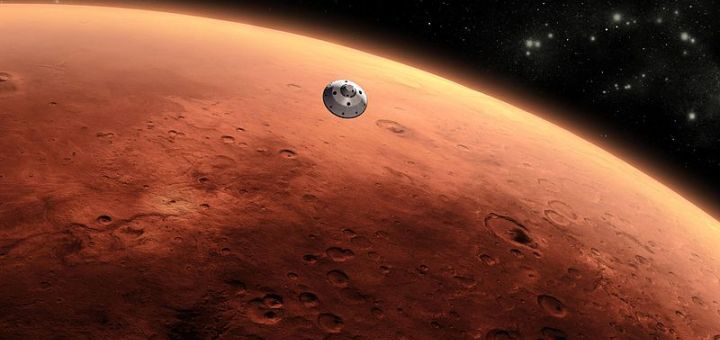
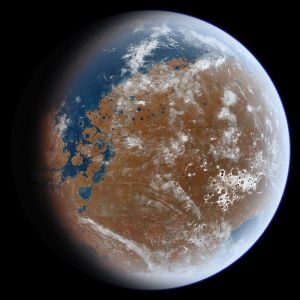
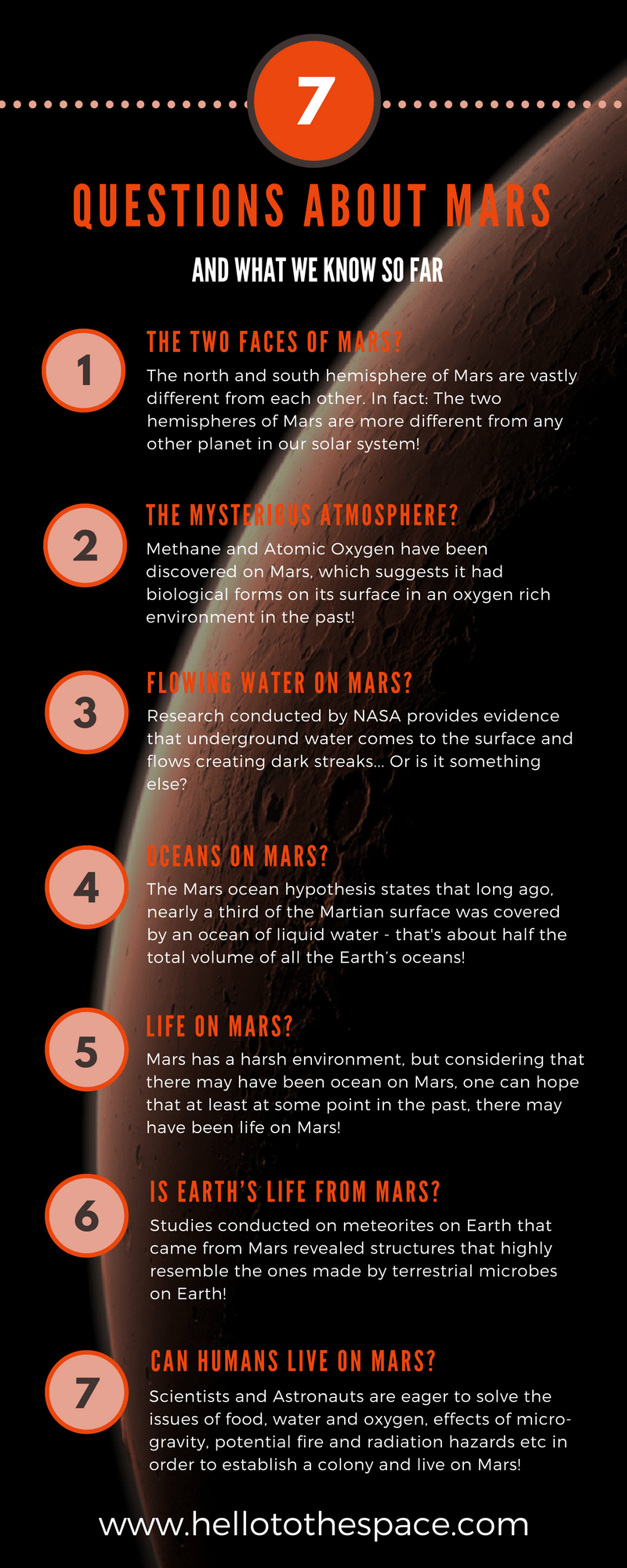



Comment: See Also:
- New study: Comets and asteroids strike Mars with organics
- The Earth - Mars Connection
- Mars to get planetary ring when Phobos breaks apart
- Massive subsurface ice sheets offer potential water source for future explorers of Mars
And check out SOTT radio's: Behind the Headlines: The Electric Universe - An interview with Wallace Thornhill